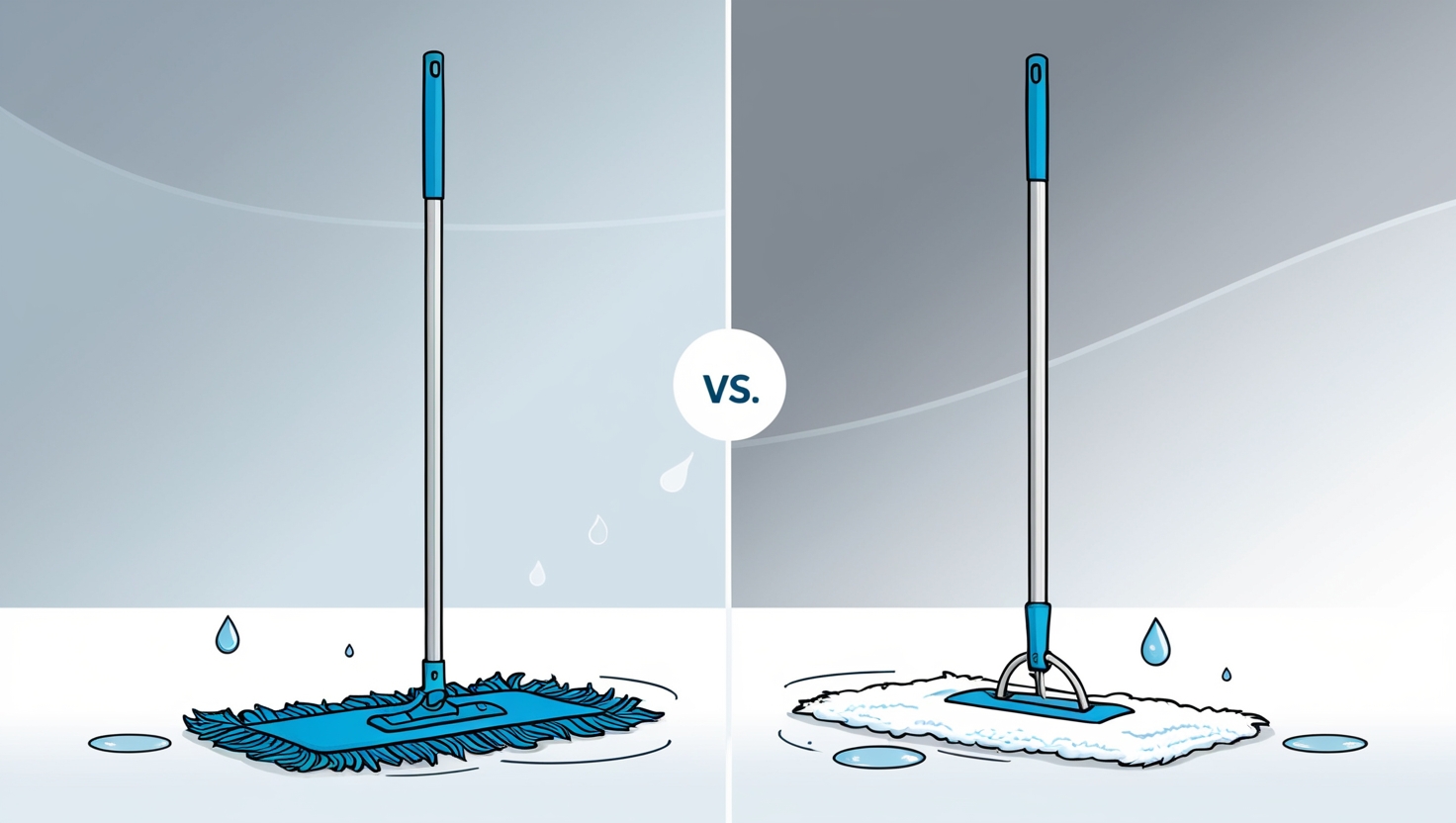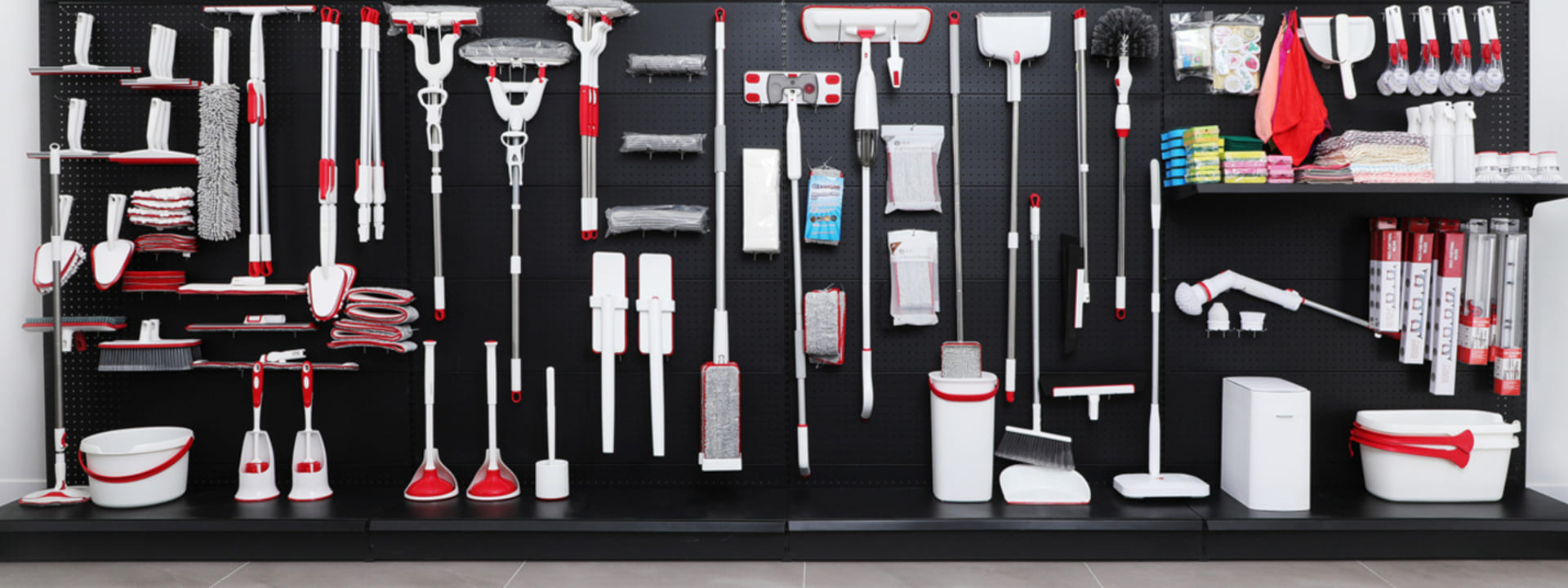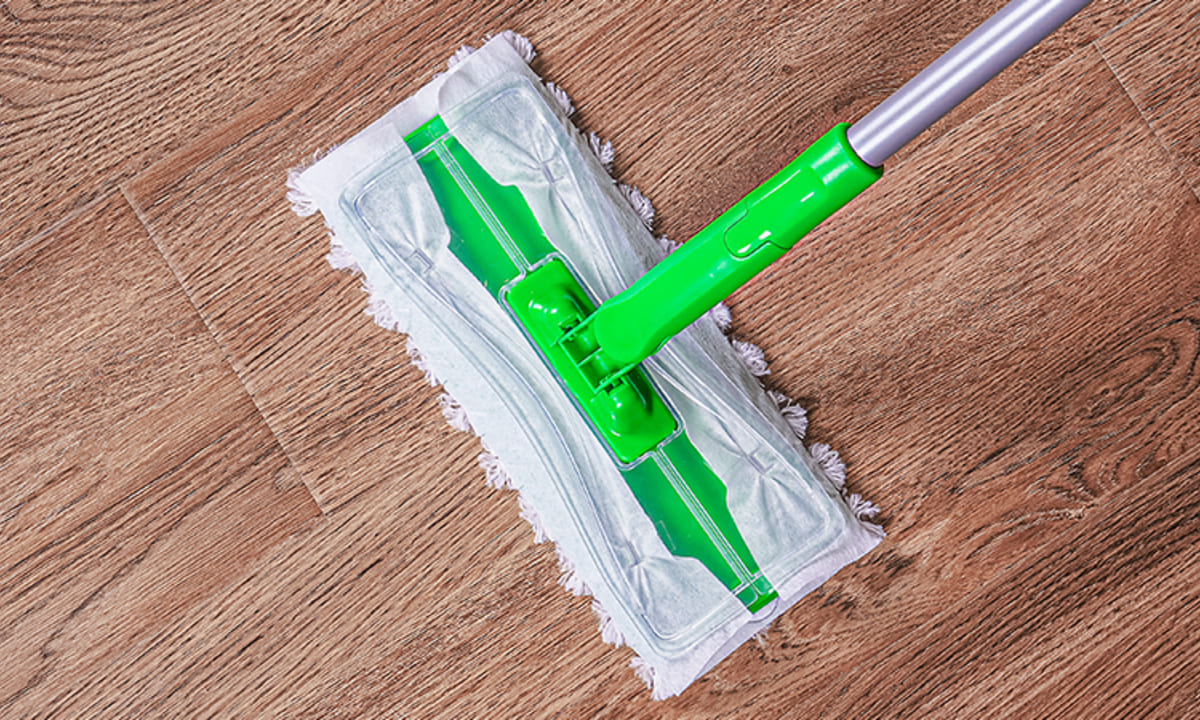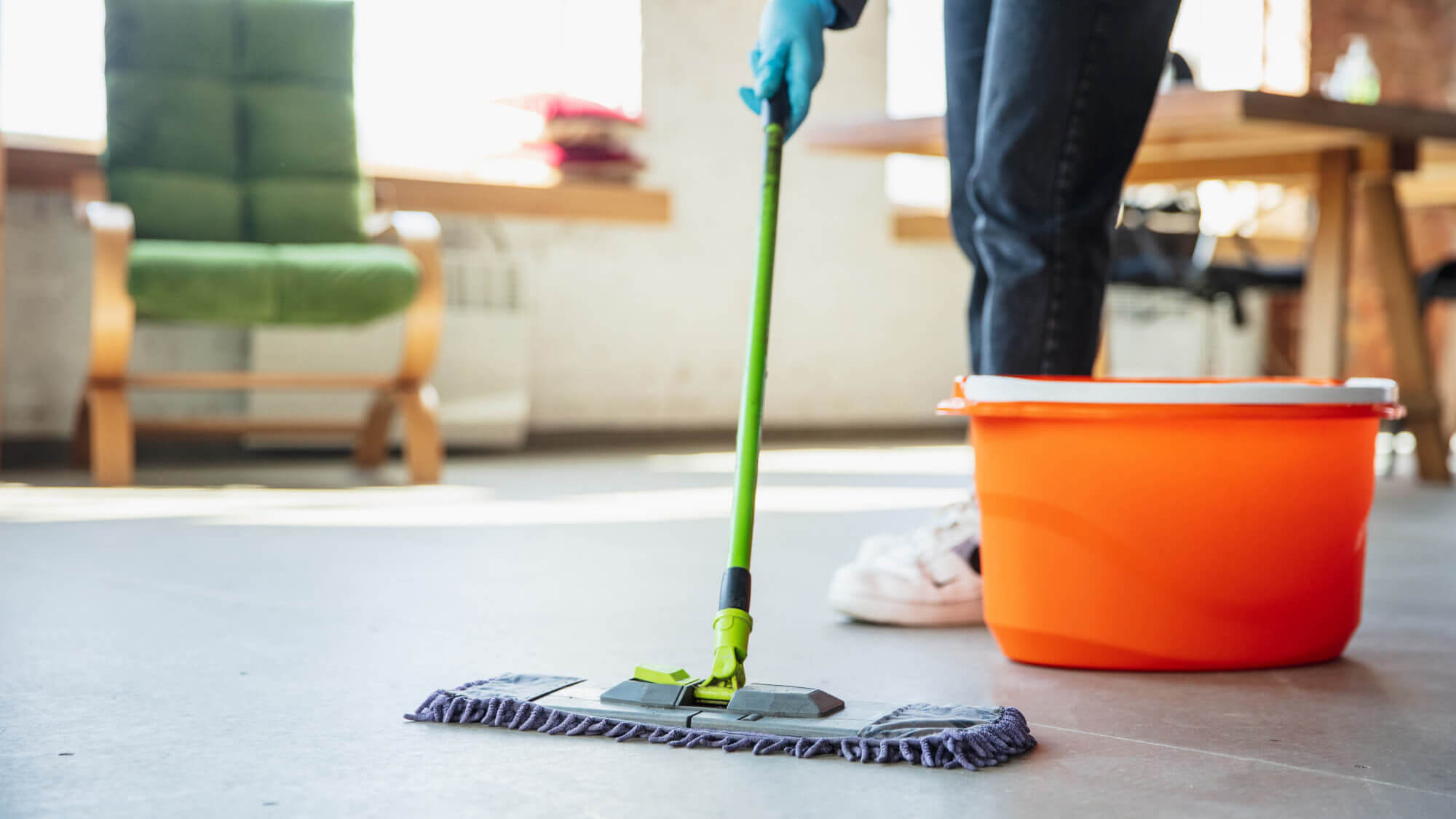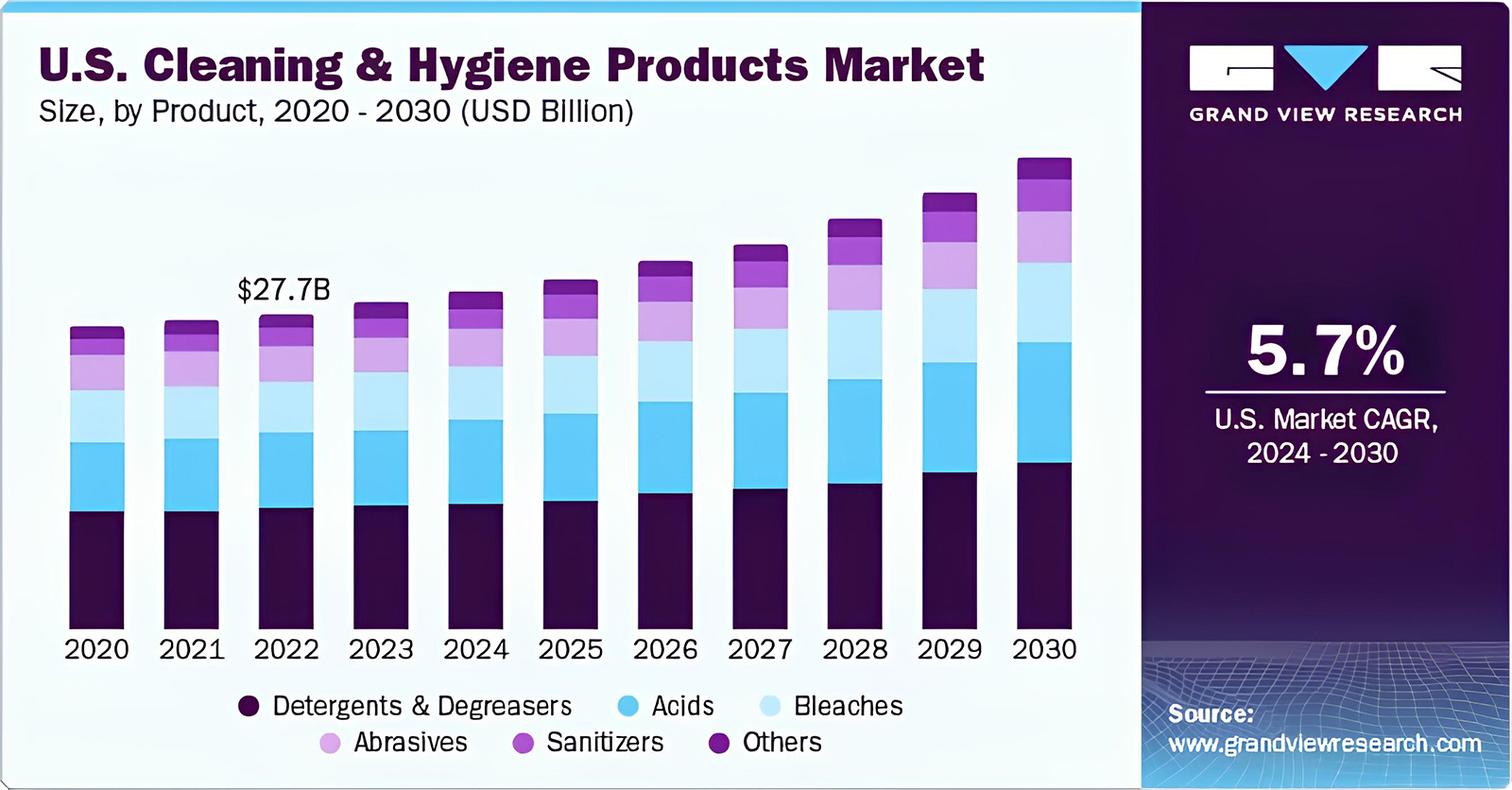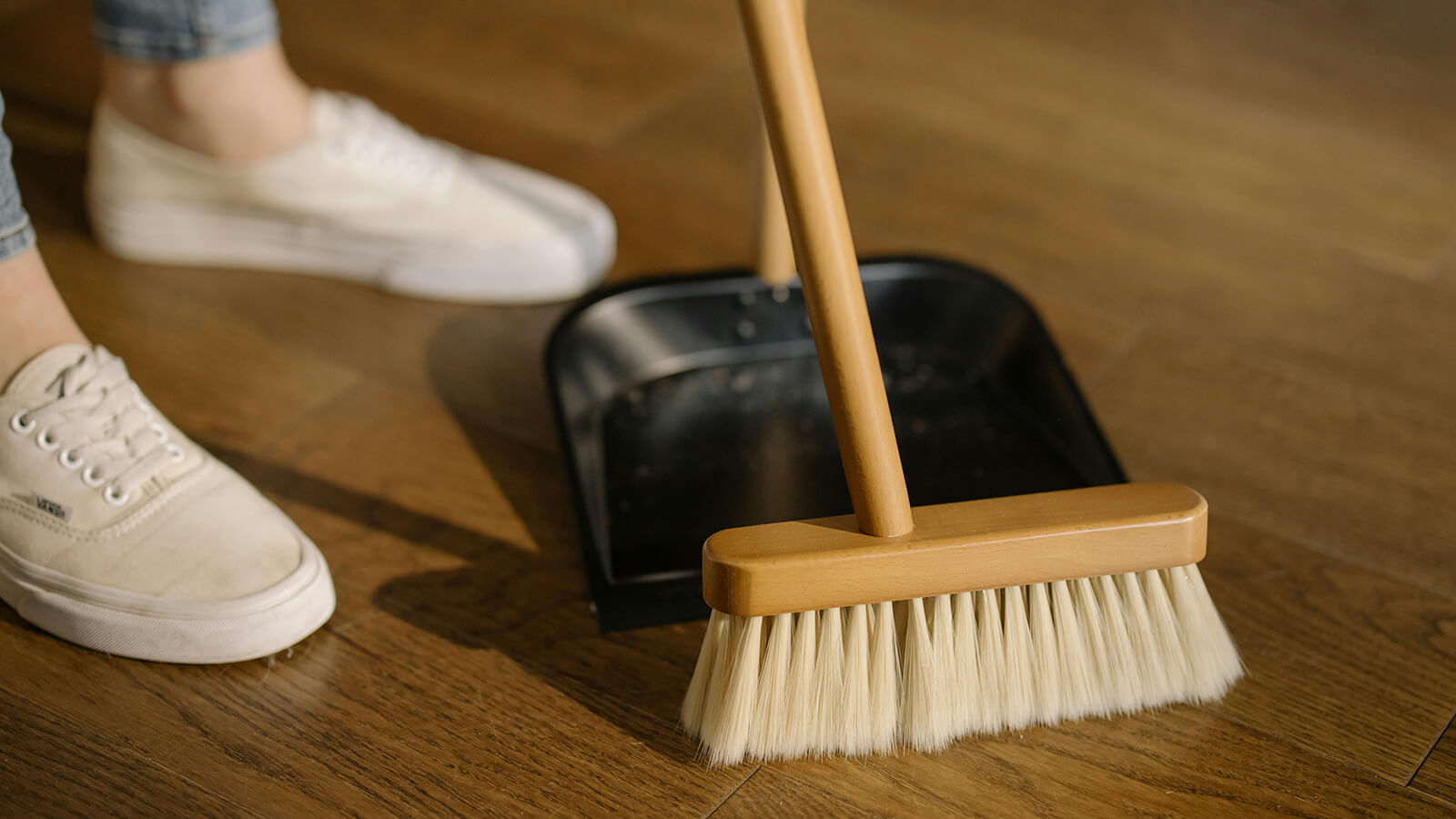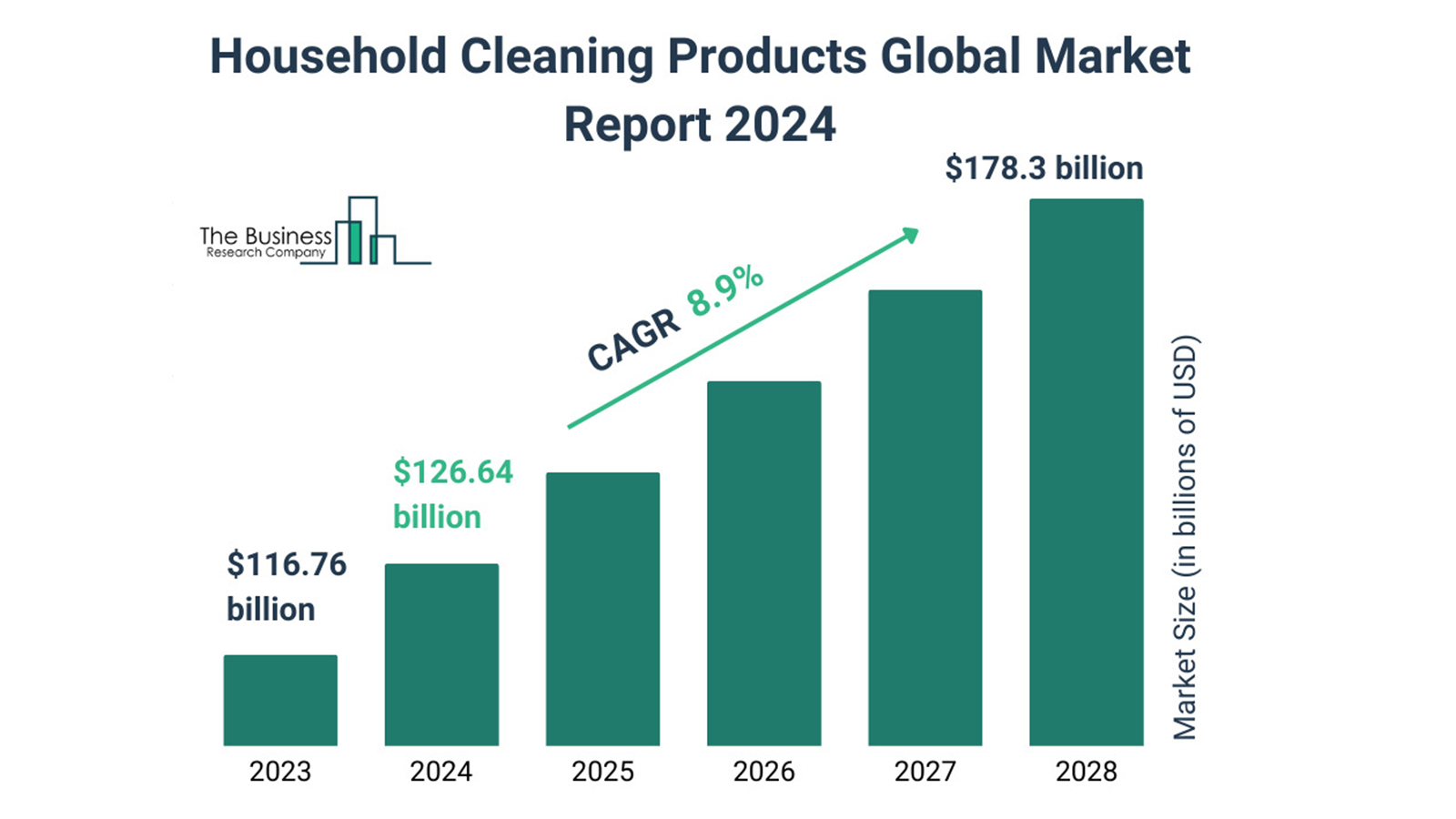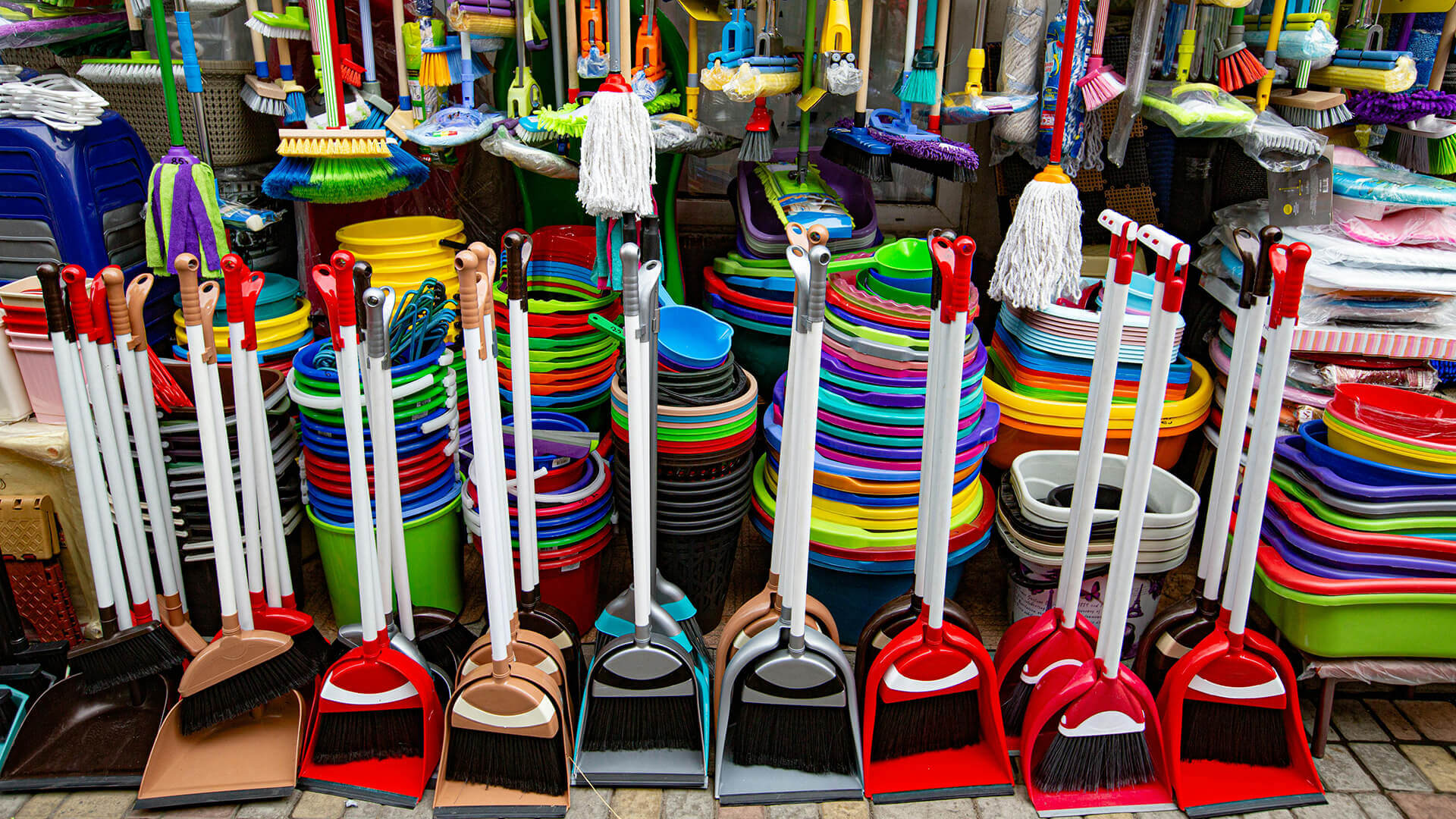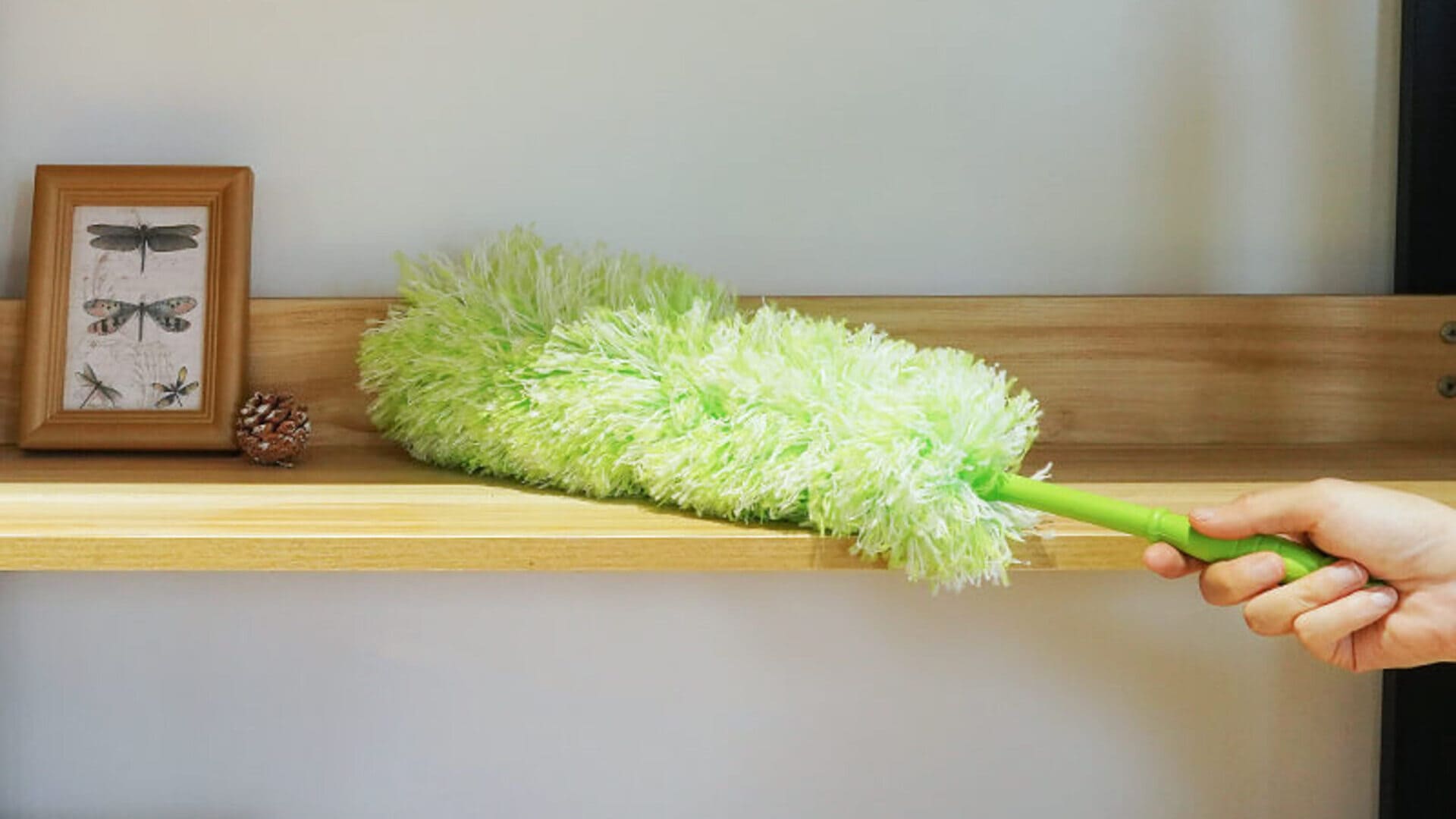There is nothing as crucial as choosing the right mop for business cleaning when it comes to hygiene and cleanliness. The type of mop used can influence or enhance the cleanliness, expense, and potency of operations. Some mops can actually save a significant amount of work and time on the floor, but if you fail to choose the proper one it is going to be even more time-consuming and the floor will be dirty.
Cotton and microfiber mops are the most widely utilized types in commercial settings. Businesses can make better decisions about their cleaning needs if they are aware of the distinctions between the two types.

What Are the Key Differences Between Microfiber and Cotton Mops for Commercial Use?
Knowing the critical differences between cotton and microfiber mops helps when selecting the best wholesale mop products for your home and business:
Material Composition and Absorbency
Microfiber mops, made of synthetic polyester and nylon, capture dirt, dust, and bacteria much more effectively than conventional string mops and cloths, achieving up to 99% efficiency according to the UC Davis Health System. Their split fiber design creates millions of tiny hooks that trap even smaller particles. This makes microfiber mops for commercial cleaning a cost-effective choice for businesses frequently cleaning high-traffic areas like shops, malls, or offices. While cotton mops can absorb large volumes of water, they are less effective at removing bacteria.
Durability and Lifespan in Commercial Environments
The study from United States Environmental Protection Agency (EPA) shows microfiber mops can last for more than 500 washes, maintaining their shape and effectiveness, while cotton mops deteriorate after 50 washes. Although microfiber mops have a higher initial cost, they come in larger packs, making them more economical over time, especially in high-traffic areas.
Cleaning Efficiency for Different Tasks
Microfiber mops excel in hygiene-critical settings, removing up to 98% of bacteria with just water, whereas cotton mops are better for absorbing large spills in industrial environments. Microfiber mop absorbency and lightweight design reduce worker fatigue, allowing for easier daily cleaning.
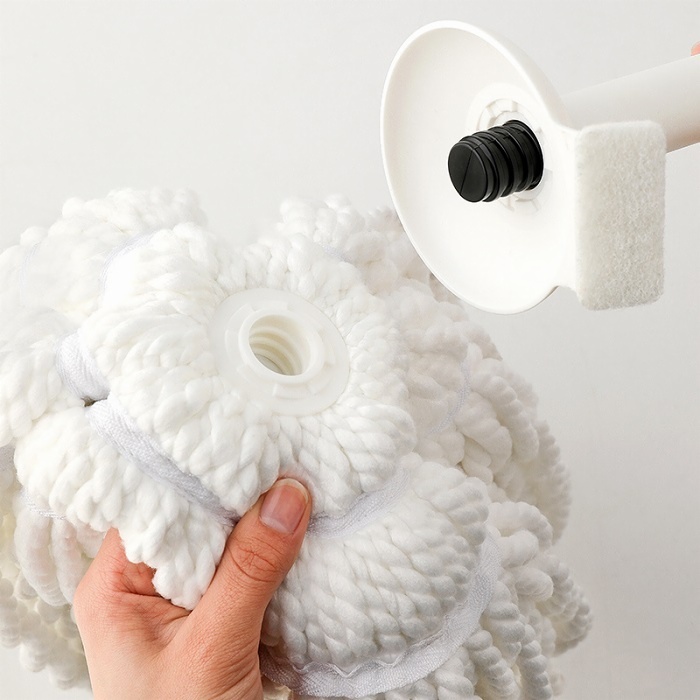
Microfiber Mop vs Cotton Mop: Cost-Effective for Long-Term Use
When choosing between cotton and microfiber mops for long-term use, the initial cost and continuing expenses must be considered. Microfiber mops may be more expensive initially, but their durability and cleaning power often results in significant cost savings over time.
Initial Expense vs. Lifespan of Every Mop
In general, microfiber mops are more expensive upfront than cotton mops. Cotton mops typically cost up to 10$, while a typical microfiber mop can cost anywhere from $15 to $40 microfiber mop can cost. However, microfiber mops’ extended lifespan often makes up for their higher price. Microfiber mops, though higher in initial cost, often offer better resale profit margins due to their durability and longer usage life.
As mentioned above microfiber mops can withstand more washes than cotton mops, they require fewer replacements, ultimately lowering their cost.
Savings on Labor Costs with Microfiber
The remarkable cleaning power of microfiber mops significantly reduces cleaning time. Research indicates that microfiber mops can clean surfaces up to 20% more quickly than traditional cotton mops because cleaning staff may finish duties faster, and this increase in efficiency results in labor cost reductions.
Also, microfiber mops’ quick-drying properties save downtime, helping businesses resume regular operations faster. This can result in significant cost savings for businesses with a lot of foot traffic. Wholesalers can market microfiber mops as a solution for reducing labor costs, which is attractive for businesses with tight budgets and high operational demands.
Long-Term Maintenance Costs
Commercial microfiber mops prove to be more cost-effective when analyzing long-term maintenance costs. The maintenance cost of a microfiber mop includes washing which costs 0.50 to $2 per wash, and replacing mop heads costing $5 to $15 each. General wear and tear may also require occasional replacements. On average, annual maintenance costs range from $20 to $50, making microfiber mops more cost-effective than cotton, which requires more frequent replacements.
Coming to cotton mops, the heads need replacement every 6-12 months, costing $10 to $20 each. Regular laundering incurs costs of $1 to $3 per wash, while additional cleaning solutions or chemicals further increase the overall maintenance expenses, totaling $50 to $100 annually.
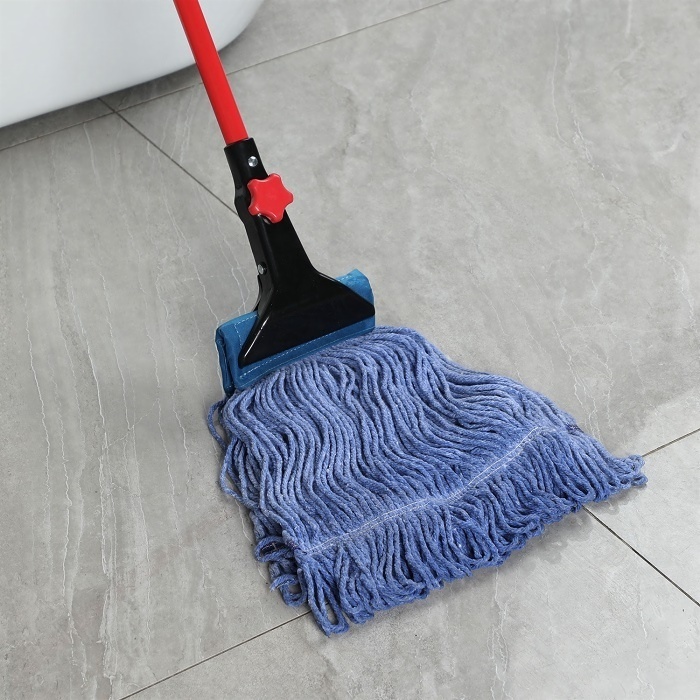
How Do Microfiber and Cotton Mops Perform on Different Floor Types?
Surface Area Cleaned per Mop Head Before Rinsing
Covering surface area is another important factor before choosing the right mop. According to EPA research, standard cotton mops only cover roughly 100 square feet before needing to be dunk-downed, whereas microfiber mop heads may clean 400–500 square feet before needing to be washed. Microfiber’s excellent structure offers fast water absorption and dirt trapping.
Suitability for Common Commercial Floors
Microfiber and cotton mops offer distinct advantages on commercial floor types such as vinyl, tile, hardwood, and laminate. Microfiber mops excel on smooth surfaces like vinyl and tile, capturing acceptable debris and leaving floors streak-free. They are gentle enough for hardwood and laminate, reducing the risk of scratches.
Cotton mops, on the other hand, are better suited for rougher tile or textured surfaces, which are standard in industrial settings and are ideal for tasks requiring high absorbency. Microfiber’s versatility and ability to use less water make it more adaptable across different commercial floor types.
Gentle Cleaning vs. Tough Scrubbing
Microfiber mops are perfect for delicate surfaces like hardwood, providing a gentle clean without damaging the finish. The soft, non-abrasive fibers of microfiber are ideal for surfaces requiring careful maintenance.
In contrast, cotton mops are better for harsh scrubbing on heavily soiled areas. Their thicker fibers are excellent for deep cleaning tasks involving grime or oil. While microfiber is ideal for preserving delicate flooring, cotton mops are built to withstand the rigors of mopping industrial floors.
Ease of Use in Large Commercial Spaces
Ease of use is crucial in large commercial areas like offices, hospitals, and warehouses. Microfiber mops are lightweight and easy to maneuver, making them ideal for quickly cleaning large spaces. Additionally, their efficiency in debris removal makes them suitable as high-traffic mops for maintaining cleanliness in busy environments.
Although heavier, cotton mops absorb more liquid, making them suitable for spaces like warehouses where spills are frequent. However, they require more water and physical effort, potentially slowing the cleaning process in vast areas compared to microfiber mops.
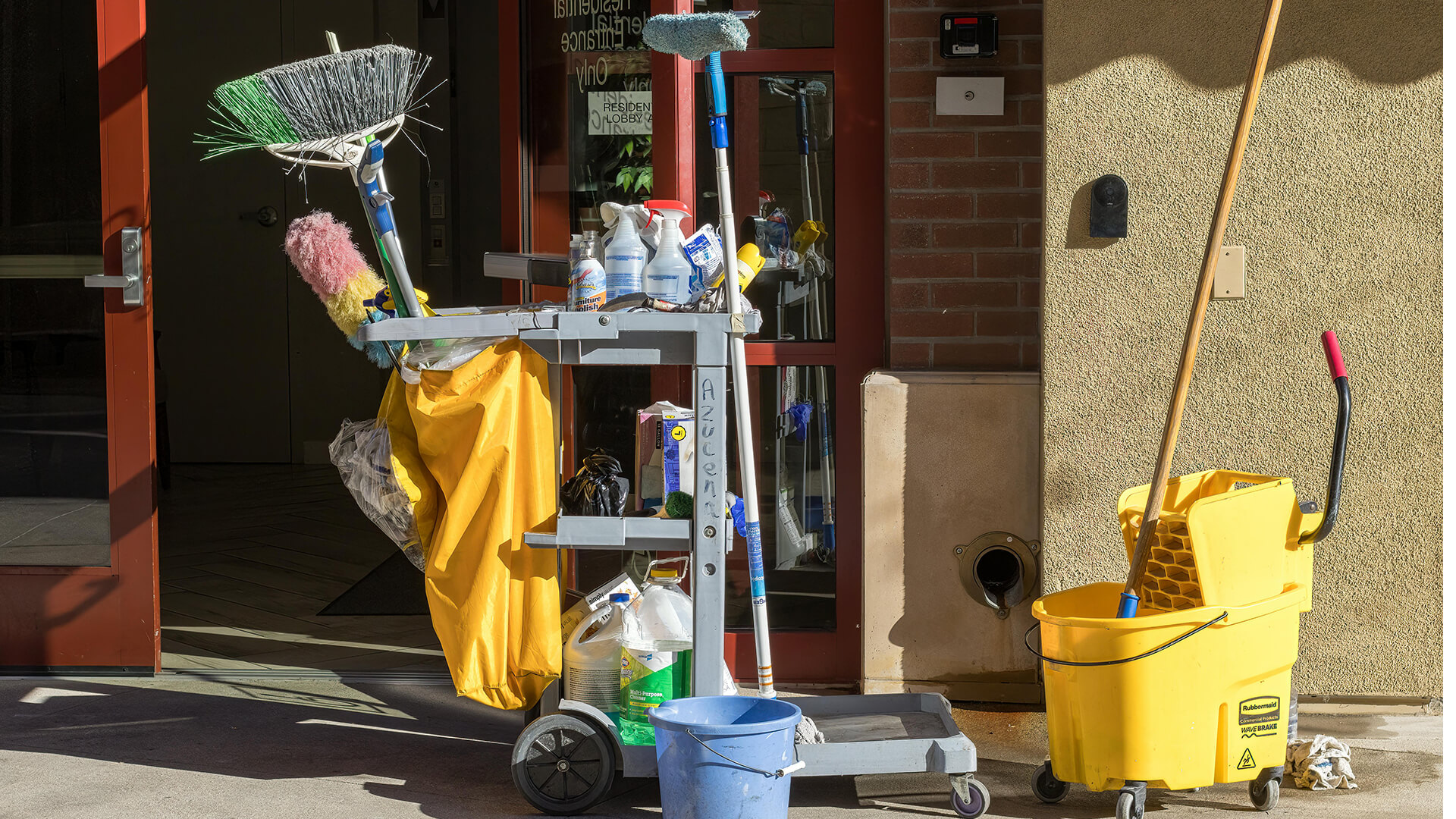
How Easy Is It to Clean and Maintain Microfiber Mops vs. Cotton Mops?
Microfiber’s Resilience to Laundering
Due to their fine filaments, microfiber mop heads excel at collecting microbes. However, laundering poses risks; high heat and harsh chemicals can damage their fibers, reducing effectiveness. This creates a paradox for laundry facilities as chemical cleaning may harm the mops, while gentler methods may leave contaminants behind.
Common Issues with Cotton Mops
One major maintenance issue with cotton mop heads is that they shed fibers after being laundered. Over time, this may lead to twisted strands and decreased potency. Cotton mop heads have a shorter lifespan than microfiber because they typically lose 10% of their fibers with each wash. These problems may result in higher cleaning expenses and labor.

What Are the Environmental Impacts of Microfiber vs. Cotton Mops?
Use of Chemicals and Water
Microfiber mops are notably more proficient than traditional cotton mops, using less water and cleaning agents. According to research, microfiber can save up to 90% on water use, making it a more environmentally friendly option. Because of this considerable decrease, pollution is reduced as less wastewater enters our ecosystems.
Also, microfiber’s remarkable ability to retain dirt and oil provides effective cleaning with little to no chemicals. Cotton mops, on the other hand, may require more water and cleaning agents to reach the same degree of cleanliness, which increases chemical runoff and contaminates the environment.
Sustainability of Natural Cotton vs. Synthetic Microfiber
Differences in production methods between natural cotton and synthetic microfiber are essential when comparing their sustainability. Cotton is a renewable resource that can be produced without dangerous substances if sustainable agricultural methods are used. However, typical cotton production frequently uses a lot of water and reagents, which raises questions about sustainability.
On the contrary, petroleum-based materials, which can have a significant environmental impact from extraction and processing, are the source of synthetic microfiber. According to a study, microfiber produces more greenhouse gas emissions than cotton. Therefore, although cotton is a natural product, its production may not be ecologically favorable.
Environmental Benefits for Businesses with Green Cleaning Initiatives
For companies that prioritize sustainability, choosing the right cleaning products can have a major positive impact on the environment. Using microfiber mops instead of cotton will help you use less excessive moisture and harsh cleaning agents, which is in line with green cleaning campaigns.
Furthermore, microfiber mops can improve the quality of indoor air by reducing the amount of hazardous substances released into the environment. Businesses that prioritize eco-friendly cleaning products not only raise their corporate responsibility and sustainability reputation but also attract clients and customers who care about the environment.
Conclusion: Which Mop Should Your Business Choose?
When choosing the right mop for your business, you should consider factors like cost, performance, hygiene, and environmental impact. For cleaning companies or suppliers, it’s wise to invest in both types, depending on budget and specific cleaning needs, to maintain flexibility and efficiency.
For cleaning tools distributors, wholesalers, and brand owners seeking high-quality cleaning products, JESUN stands out as a premium mop manufacturer. Established in 1986, it has been a leader in the cleaning industry, continually innovating to meet evolving needs.
With an extensive range of cleaning tools, including wholesale microfiber and cotton mops, JESUN is committed to delivering solutions that cater to diverse commercial requirements. Contact us today to get your high-quality products that can help your cleaning supply business.

